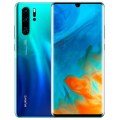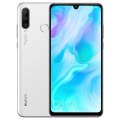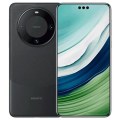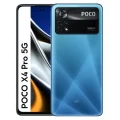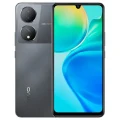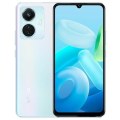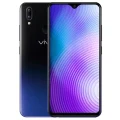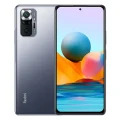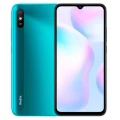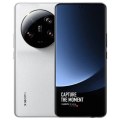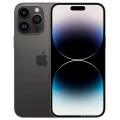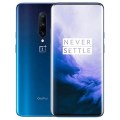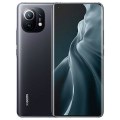- Awesome page
- Latest Mobile
- Smartphones
- Huawei P30
Huawei P30
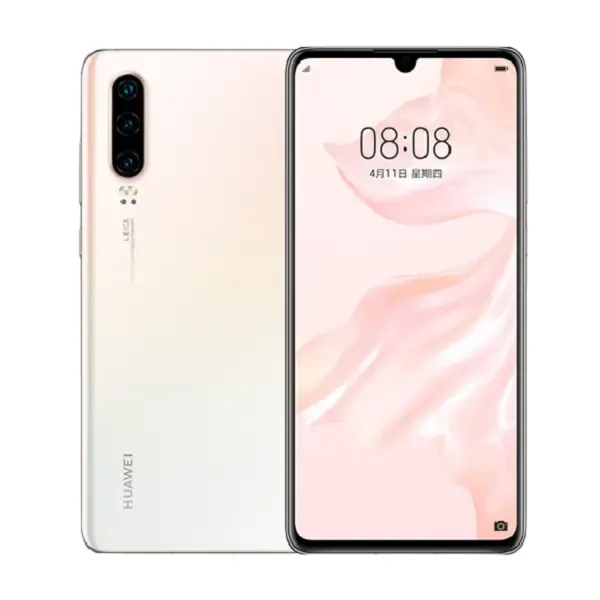


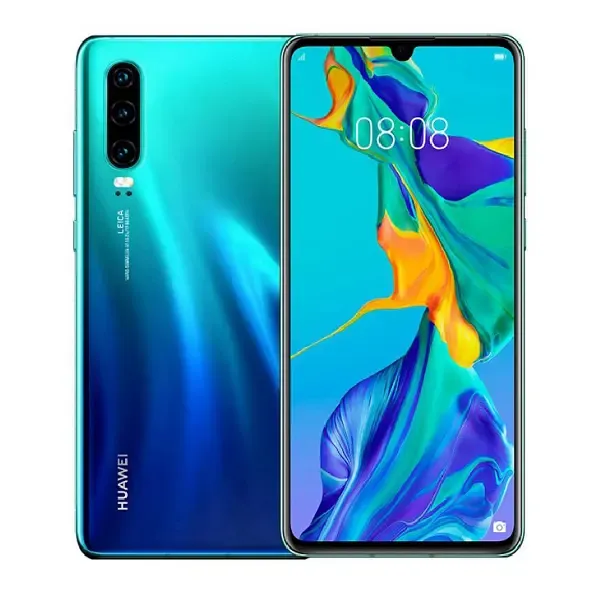
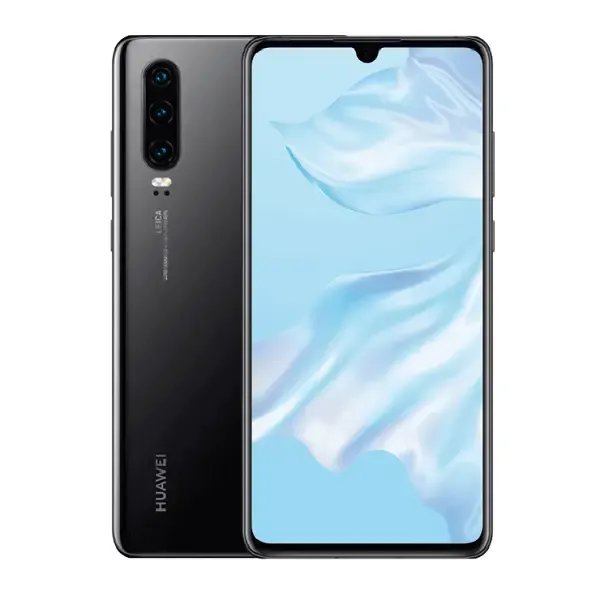
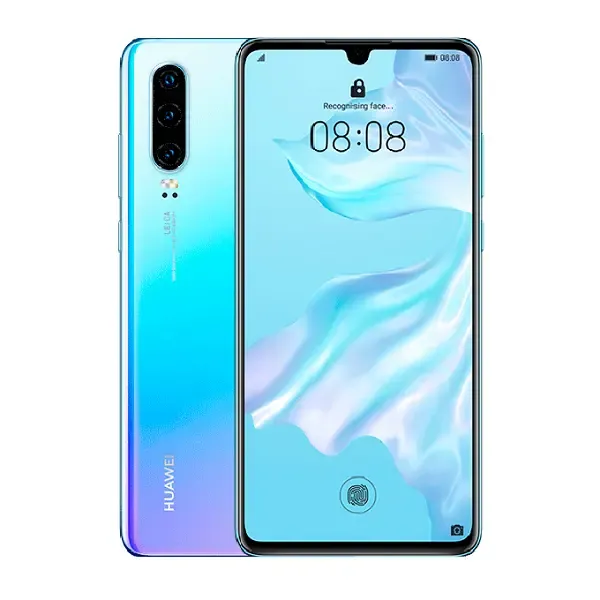
Huawei P30 Price in Bangladesh
The Huawei P30 is available in Bangladesh for BDT 54,999. This model offers a stunning 6.1-inch OLED capacitive touchscreen display with a high screen-to-body ratio of ~85.8% for an immersive viewing experience. The Huawei P30 is powered by the HiSilicon Kirin 980 Octa-Core processor, providing efficient performance and smooth multitasking.
Specifications
General
| Model | Huawei P30 |
| Announced | 2019, March |
| Released | 2019, March |
| Status | Available |
| Official price | 6GB 128GB ৳54,999 |
| Unofficial price | 6GB 128GB ৳49,000 |
Design
| Dimensions | 149.1 x 71.4 x 7.6 mm (5.87 x 2.81 x 0.30 in) |
| Weight | 165 g (5.82 oz) |
| Colors |
Aurora, Amber Sunrise, Breathing Crystal, Black, Pearl White |
Network
| Technology | GSM / HSPA / LTE |
| 2G Network |
GSM 850 / 900 / 1800 / 1900 - SIM 1 & SIM 2 (dual-SIM model only) |
| 3G Network |
HSDPA 800 / 850 / 900 / 1700(AWS) / 1900 / 2100 |
| 4G Network | LTE band 1(2100), 2(1900), 3(1800), 4(1700/2100), 5(850), 6(900), 7(2600), 8(900), 9(1800), 12(700), 17(700), 18(800), 19(800), 20(800), 26(850), 28(700), 32(1500), 34(2000), 38(2600), 39(1900), 40(2300) |
| GPRS <strong>GPRS</strong> (General Packet Radio Service) is a packet oriented mobile data service on the 2G and 3G cellular communication system's global system for mobile communications (GSM), Generally, GPRS is used for the purpose of wireless data transfer, such as sharing pictures and videos or browsing the Internet via a mobile phone connection. | |
| EDGE <strong>EDGE</strong> (Enhanced Data GSM Environment) is a wireless network technology generally considered the next step in the 2G network offers data transfer rates up to four times faster than ordinary GSM networks, Generally, EDGE is used for the purpose of wireless data transfer, such as sharing pictures and videos or browsing the Internet via a mobile phone connection. | |
| Speed | HSPA 42.2/5.76 Mbps, LTE-A Cat21 1400/200 Mbps |
Display
| Display Type <strong>Display Technology => </strong> A number of display technologies and types used in mobile phones => TFT (Thin Film Transistor), IPS (In-Place Switching), OLED (Organic Light Emitting Diode), AMOLED (Active-Matrix Organic Light-Emitting Diode), Super AMOLED (an even advanced version of AMOLED), Resistive Touchscreen (Resistive touchscreens contain two layer of conductive material with a very small gap between them which acts as a resistance), Capacitive Touchsceen (Capacitive touchscreen technology consists of a layer of glass coated with a transparent conductor) | OLED capacitive touchscreen, 16M colors |
| Size | 6.1 inches, 91.3 cm2 (~85.8% screen-to-body ratio) |
| Resolution | 1080 x 2340 pixels, 19.5:9 ratio (~422 ppi density) |
| Features |
DCI-P3HDR10 |
Camera
Main camera
| Camera Setup | Triple |
| Primary <strong>Camera</strong> is able to capture photographs and usually videos, The most important characteristics of a camera are the resolution (measured in megapixels), lens focus type (fixed or automatic), higher megapixel cameras are known to capture higher quality photos, but not always a good measurement of the photos quality. |
40 MP, f/1.8, 27mm (wide), 1/1.7&amp;amp;quot;, PDAF/Laser AF 8 MP, f/2.4, 80mm (telephoto), 1/4&amp;amp;quot;, PDAF/Laser AF, OIS, 3x optical zoom 16 MP, f/2.2, 17mm (ultrawide), PDAF/Laser AF |
| Features |
Leica optics, dual-LED dual-tone flash, panorama, HDR |
| Video | 2160p@30fps, 1080p@60fps, 1080p@30fps (gyro-EIS), 720p@960fps |
Selfie camera
| Camera Setup | Single |
| Primary <strong>Camera</strong> is able to capture photographs and usually videos, The most important characteristics of a camera are the resolution (measured in megapixels), lens focus type (fixed or automatic), higher megapixel cameras are known to capture higher quality photos, but not always a good measurement of the photos quality. |
32 MP, f/2.0, (wide), 0.8µm |
| Features | HDR |
| Video | 1080p@30fps |
Hardware
| Chipset <strong>Chipset</strong> is a group of integrated circuits designed to perform one or a more dedicated functions, often with real time computing constraints, Popular smartphones are equipped with more advanced embedded chipsets that can do many different tasks depending on their programming. | HiSilicon Kirin 980 (7 nm) |
| CPU <strong>CPU</strong> (Central Processing Unit) mostly known as processors, CPU processes instructions in order to carry out certain functions that make your device operate properly. Processors are often described as the brain of computers, smartphones and tablets, Smartphones and tablets rely on processors to carry out their every task, Processors are an incredibly important factor in selecting any type of computing device, including your smartphone. | Octa-core (2x2.6 GHz Cortex-A76 & 2x1.92 GHz Cortex-A76 & 4x1.8 GHz Cortex-A55) |
| GPU <strong>GPU</strong> (Graphics Processing Unit) is a single-chip processor designed to rapidly manipulate and alter memory to accelerate the creation of images in a frame buffer intended for output to a display, This includes things such as lighting effects, object transformations, and 3D motion. | Mali-G76 MP10 |
| RAM (Memory) <strong>RAM</strong> (Random Access Memory) is a type of computer memory that can be accessed randomly, any byte of memory can be accessed without touching the preceding bytes that allows information to be stored and accessed quickly from random locations. RAM is the most common type of memory found in computer systems, smartphones, tablets and other electronic devices. | 8/6 GB |
| Internal Storage <strong>Internal Storage</strong> is a data storage space (flash memory) mostly used in smartphones, tablets and other electronic devices where operating system, apps, music, photos, videos, files and other user data Is stored. | 64/128/256 GB |
| Sensors <strong>Sensors</strong> are electronic components that detects and responds to some type of input from the physical environment. The specific input could be light, heat, motion, moisture, pressure and location, The output is generally a signal that is converted to use in computing systems, a location sensor, such as a GPS receiver is able to detect current location of your electronic device. |
Fingerprint (under display), accelerometer, gyro, proximity, compass, color spectrum |
Connectivity
| Bluetooth <strong>Bluetooth</strong> is a wireless communications technology for exchanging data between mobile phones, headsets, computers and other network devices over short distances without wires, Bluetooth technology was primarily designed to support simple wireless networking of personal consumer devices. | 5.0, A2DP, aptX HD, LE |
| Infrared <strong>Infrared</strong> connectivity is an old wireless technology used to connect two electronic devices. It uses a beam of infrared light to transmit information and so requires direct line of sight and operates only at close range. | |
| USB | 3.1, Type-C 1.0 reversible connector |
| GPS <strong>GPS</strong> The Global Positioning System is a satellite-based radio navigation system, GPS permits users to determine their position, velocity and the time 24 hours a day, in all weather, anywhere in the world, In order to locate your position, your device or GPS receiver must have a clear view of the sky. | Yes, with dual-band A-GPS, GLONASS, BDS, GALILEO, QZSS |
| NFC <strong>NFC</strong> (Near field communication) is a set of standards for smartphones and similar devices to establish peer-to-peer radio communications with each other by touching them together or bringing them into proximity, usually no more than a few inches. |
Battery
| Battery Type <strong>Battery Type => </strong> Cell phones run on various kinds of batteries depending on the manufacturer, phone size or shape and features. There are basically four types of cell phone batteries => Lithium Polymer, Lithium Ion, Nickel Metal Hydride and Nickel Cadmium. | Non-Removable Li-Po |
| Capacity <strong>Battery Capacity</strong> is a measure (typically in Amp-hr) of the charge stored by the battery, and is determined by the mass of active material contained in the battery. The battery capacity represents the maximum amount of energy that can be extracted from the battery under certain conditions. | 3650 mAh battery |
| Charging Charging | Fast battery charging 22.5W |
Huawei P30 Review: A Powerhouse for Photography Enthusiasts
If you’re looking for a smartphone that combines cutting-edge performance with professional-grade photography, the Huawei P30 may just be what you’re after. With its sleek design, Leica triple camera system, and robust performance capabilities, the P30 has carved out a niche for itself in the competitive market of flagship phones. But how does it stack up in real-world use, and is it worth its price tag? Let’s take an in-depth look.
The Huawei P30 at a Glance
Designed for photography lovers and tech enthusiasts, the Huawei P30 flaunts a 6.1-inch OLED display, offering vivid colors and sharp visuals. Powered by the HiSilicon Kirin 980 processor, it ensures smooth multitasking and a lag-free experience, whether you’re gaming, streaming, or editing photos. Available in Bangladesh for BDT 54,999, the P30 promises a balance of premium hardware and affordability.
Sleek Design Meets Ergonomic Excellence
The Huawei P30 is nothing short of a visual delight. Featuring polished aesthetics, an impressive ~85.8% screen-to-body ratio, and a lightweight form factor, it fits comfortably in your hand.
- Vivid Display: The 6.1-inch OLED capacitive touchscreen offers deep blacks, bright whites, and excellent contrast. It’s perfect for binge-watching your favorite series or editing photos on the go.
- Build Quality: The P30 blends glass and aluminum with precision, resulting in a premium feel. Additionally, it’s available in unique gradient color finishes, ensuring it stands out in any crowd.
- Ergonomics: Compact enough for one-handed use, you’ll find it especially practical given today’s trend of oversized smartphone screens.
While the P30 doesn’t boast full water resistance (with an IP53 rating instead of IP68), it’s well-protected against splashes.
A Game Changer for Photography
What really sets the Huawei P30 apart is its Leica triple-camera system. Whether you’re an amateur snapping vacation photos, or a professional shooting in challenging conditions, the P30 delivers exceptional results.
Triple-Camera System Highlights
- 40MP SuperSensing Main Camera: This sensor excels in low-light scenarios, capturing sharp, detailed images even in challenging conditions.
- 16MP Ultrawide Lens: Ideal for landscapes, group photos, or creative shots, providing a dramatically broad perspective.
- 8MP Telephoto Lens with Optical Zoom: Equipped with 3x optical zoom and up to 30x digital zoom, you can now capture crisp details even from a distance.
Features for Photography Enthusiasts
- Night Mode: One of the best in its class, the P30’s night mode uses AI stabilization to make long-exposure shots vivid and noise-free.
- AI-Powered Scene Recognition: Automatically fine-tunes settings based on the subject and environment, ensuring professional-grade results with minimal effort.
- 4K Video Recording: While primarily a photographer’s tool, it performs decently for videography, with excellent stabilization and dynamic range.
Even in comparison to other flagship smartphones, such as those in the Samsung Galaxy S10 series or Google Pixel 3, the Huawei P30’s camera excels in low-light situations and versatility.
Performance, Battery, and Everyday Use
When it comes to daily performance, the Huawei P30 doesn’t disappoint.
- Processor: Powered by the Kirin 980 Octa-Core processor, it’s one of the first chipsets utilizing a 7nm process for higher efficiency and speed. This makes the P30 ideal for multitasking, casual gaming, and productivity apps.
- Battery Life: The 3650mAh battery ensures you won’t be running for the charger before the day is up. It supports Huawei SuperCharge, giving you over 50% battery in just 30 minutes.
- Storage and RAM: The P30 comes with generous storage options (up to 8GB RAM and 256GB storage), ensuring you have ample space for photos, apps, and media files.
For Gamers and Power Users
Mobile gamers will particularly appreciate its GPU Turbo 3.0 technology, which boosts gaming performance while reducing energy consumption. Popular titles such as PUBG Mobile run seamlessly with impressive frame rates.
How It Compares to Other Flagship Smartphones
The Huawei P30 competes head-to-head with other flagship models. Here’s a quick comparison based on camera, performance, and design.
Feature | Huawei P30 | Samsung Galaxy S10 | Google Pixel 3 |
|---|---|---|---|
Camera | Leica triple-camera excels in low-light photography | Versatile, with ultra-wide lens | Best for single-camera enthusiasts |
Performance | Kirin 980 chipset, smooth multitasking | Exynos 9820/Snapdragon 855, comparable performance | Slightly lesser in processing speed |
Design | Gradient finish and ergonomic build | Sleek design, larger screen-to-body ratio | Simple, minimalist design |
While Samsung dominates in display quality and Google excels with software photography innovations, the P30 strikes an impressive balance between photography, design, and performance.
What Users Are Saying
Here’s what photography professionals and tech reviewers are saying about the Huawei P30:
- “The P30 completely redefines what you can expect from a smartphone camera,” says Lin from MobileTechReview.
- “I’m blown away by the detail in low-light shots. The Night Mode is a game-changer,” shares Zara, a traveling photographer.
- “It’s rare to find such a compact phone that doesn’t compromise on power or photography,” writes avid tech blogger Adrian Jones.
The overall sentiment? Huawei’s reputation for innovative smartphone photography remains intact.
Our Verdict
The Huawei P30 checks all the boxes for anyone looking for a compact flagship smartphone. Its photography is industry-leading, performance smooth, and design both stylish and ergonomic.
While it lacks features like wireless charging and a full waterproof body, these compromises hardly diminish its appeal, especially at its competitive price point of BDT 54,999 in Bangladesh. If powerful cameras and sleek aesthetics top your list of priorities, the Huawei P30 is worth your consideration.
Thinking of upgrading your smartphone? Drop a comment below to tell us what features you look for most! And don’t forget to explore our other reviews for tips on choosing the perfect phone for your needs.
